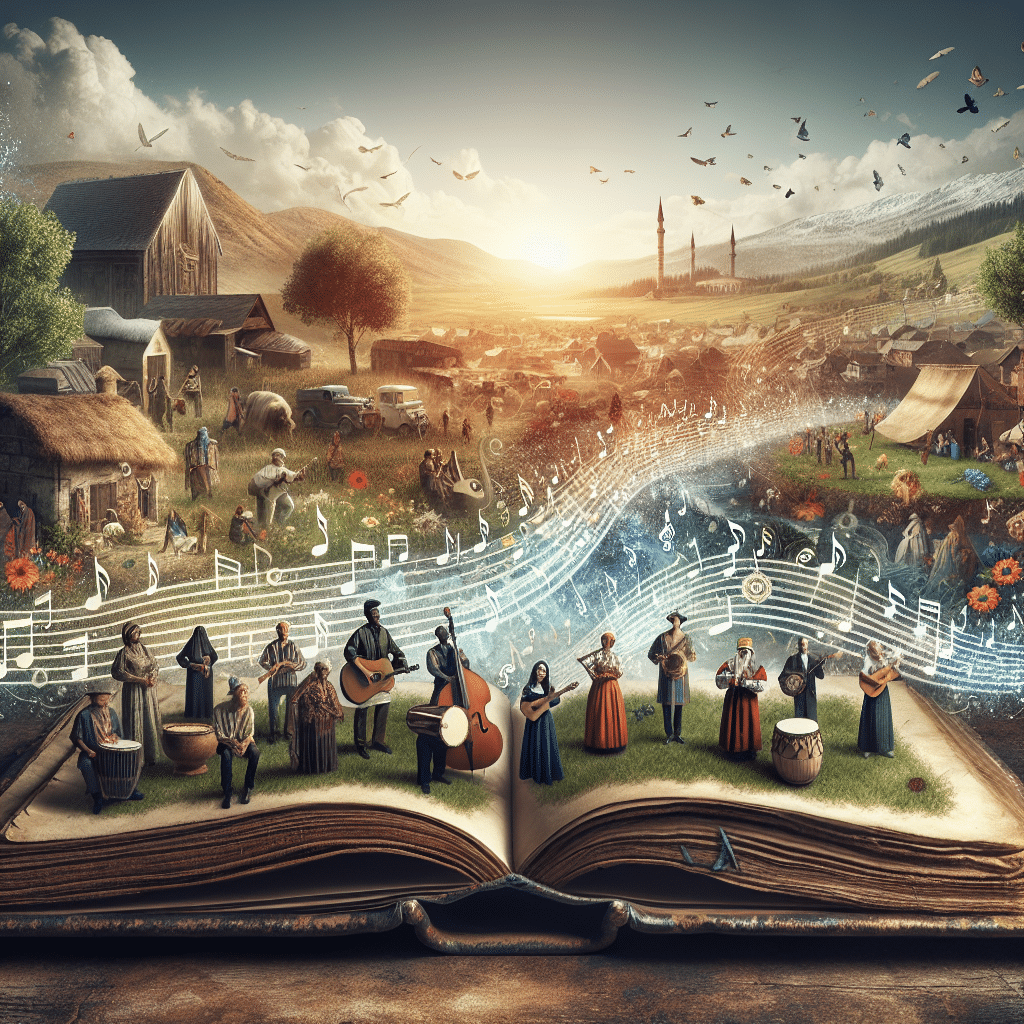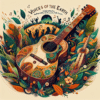“Voice of the People: Exploring the Stories Behind Traditional Folk Songs”

Folk songs serve as cultural artifacts that transcend time and geography, embodying the values, struggles, and dreams of communities. They are the voice of the people, encapsulating rich stories passed down through generations. This article delves into the significance of traditional folk songs, explores their historical contexts, and highlights the cultural narratives that these songs carry.
The Essence of Folk Songs
What Are Folk Songs?
Folk songs are musical compositions rooted in the traditions of specific cultural groups. They often reflect the daily lives, rituals, and emotions of the people and can vary widely in style, duration, and theme. These songs are often transmitted orally, evolving as they move from one generation to the next. This oral tradition helps preserve not just the music but the stories and values of communities.
Characteristics of Folk Songs
Folk songs are distinguished by their simplicity and relatability. Typically written in the vernacular, they resonate with the common person. Characteristics can include:
- Melodic Simplicity: Easy to sing along with, making them accessible to all.
- Storytelling: Narrative lyrics that convey personal or communal experiences.
- Cultural Context: Often reflecting historical events, beliefs, or practices unique to a community.
The Historical Landscape
Origins and Evolution
Folk songs date back centuries, often originating in agrarian societies where storytelling was a primary means of entertainment and education. As societies evolved, so did folk music, adapting to political changes, migration, and social movements. The folk songs of laborers, for instance, were crucial during times of mass industrialization, expressing the struggles and aspirations of working-class individuals.
Folk Songs Across Cultures
Different cultures have their own folk music traditions. In the United States, the slave spirituals and Appalachian ballads capture themes of hardship and resilience. In Ireland, traditional tunes like “Danny Boy” convey themes of loss and longing. In India, regional folk songs vary significantly, with each state showcasing its unique dialect and form of expression.
The Stories Behind the Songs
Personal Narratives and Collective Memory
Every folk song tells a story—often one of love, loss, struggle, or triumph. For instance, “Scarborough Fair” holds a tale of a quest and unrequited love, merging historical context with personal narrative. Such songs not only entertain but also serve as a repository for collective memories, preserving cultural history and identity.
Social Commentary and Change
See Also: Voices of the Earth: Celebrating the Authenticity of Acoustic Folk Artists
Voices of the Earth: Celebrating the Authenticity of Acoustic Folk ArtistsBeyond personal narratives, folk songs often serve as a medium for social commentary. For example, songs from the civil rights movement of the 1960s, like “We Shall Overcome,” became anthems for change, embodying the hopes and struggles of marginalized communities. These songs highlight the power of music as a means of protest and unify people around common goals.
Regional Variations and Variants
As folk songs travel, they morph and adapt, resulting in various regional versions. For example, the song “This Land Is Your Land,” written by Woody Guthrie, has countless adaptations reflecting diverse social issues and landscapes across America. These variants showcase the fluid nature of folk music and its ability to encapsulate evolving stories.
The Role of Technology in Preservation
From Oral Tradition to Digital Platforms
The digital age has transformed how folk songs are preserved and shared. Recording technologies and online platforms allow for the documentation of folk music that might otherwise have been lost. Artists can share their interpretations and rotate traditional melodies in ways that reach wider audiences, ensuring that these narratives remain vibrant and relevant.
Challenges of Preservation
While technology offers opportunities for preservation, it also poses challenges. The commercialization of folk music can lead to the dilution of cultural significance. Balancing respectful representation with artistic expression remains a challenge for contemporary folk artists.
The Importance of Folk Music Today
See Also: “Echoes of the Past: The Enduring Legacy of Traditional Folk Songs”
“Echoes of the Past: The Enduring Legacy of Traditional Folk Songs”Fostering Cultural Identity
Folk songs play a vital role in maintaining cultural identity, particularly for communities facing globalization. They serve as a reminder of heritage and foster pride among younger generations. As global influences permeate cultures, folk music can help preserve unique traditions and serve as a counterbalance to cultural uniformity.
Promoting Social Change
Folk songs often become vehicles for social change, raising awareness about pressing issues such as poverty, injustice, and human rights. They can galvanize communities and inspire action, making the voice of the people resonate in ways that formal political discourse may not.
Educational Value
Folk songs provide rich educational opportunities, allowing learners to engage with history, language, and cultural studies. Integrating folk music into curricula can enhance understanding of different cultures and foster empathy through shared experiences.
Conclusion
The voice of the people is encapsulated within traditional folk songs, narrating stories that bind communities together through shared experiences. These songs are not merely relics of the past; they are living histories that evolve and adapt while preserving the essence of cultural identity. Understanding and celebrating folk music is essential, as it reinforces the unique perspectives of diverse communities and reflects the struggles and triumphs of the human experience.
FAQs
See Also: “From Barn Dances to Concert Halls: The Evolution of Folk Music”
“From Barn Dances to Concert Halls: The Evolution of Folk Music”1. What defines a folk song?
A folk song is typically characterized by simple melodies, narrative lyrics, and cultural relevance, passed down orally through generations.
2. Why are folk songs important to cultural identity?
Folk songs encapsulate the experiences, values, and traditions of a community, helping to preserve cultural heritage and foster a sense of belonging.
3. How have folk songs evolved with technology?
Technology has enabled the recording and dissemination of folk music, allowing it to reach broader audiences while also presenting challenges regarding commercialization and cultural dilution.
4. Can folk songs influence social change?
Yes, folk songs often address social issues, offering a voice to the marginalized and uniting communities in their quest for change.
5. How can I learn more about folk songs and their stories?
See Also: “Melodies of Memory: How Traditional Folk Songs Preserve Cultural Heritage”
“Melodies of Memory: How Traditional Folk Songs Preserve Cultural Heritage”Engaging in community music groups, accessing online archives, or taking courses focused on folk music can enhance your understanding of these rich narratives.
If you want to know other articles similar to “Voice of the People: Exploring the Stories Behind Traditional Folk Songs” you can visit the category Folk.
